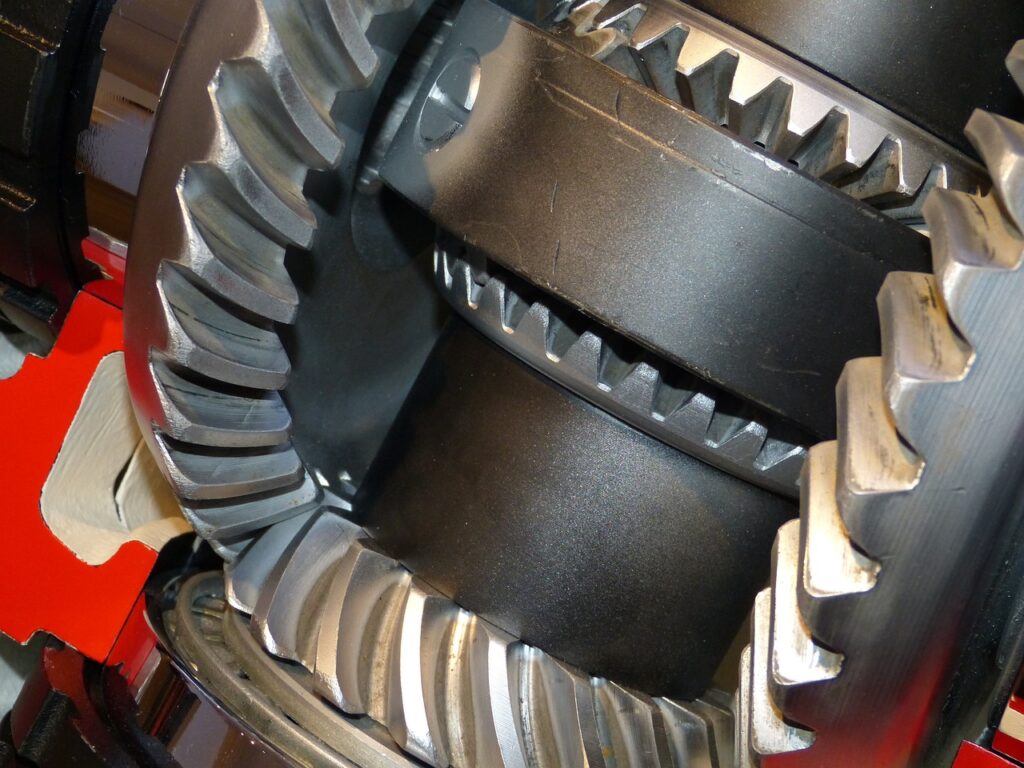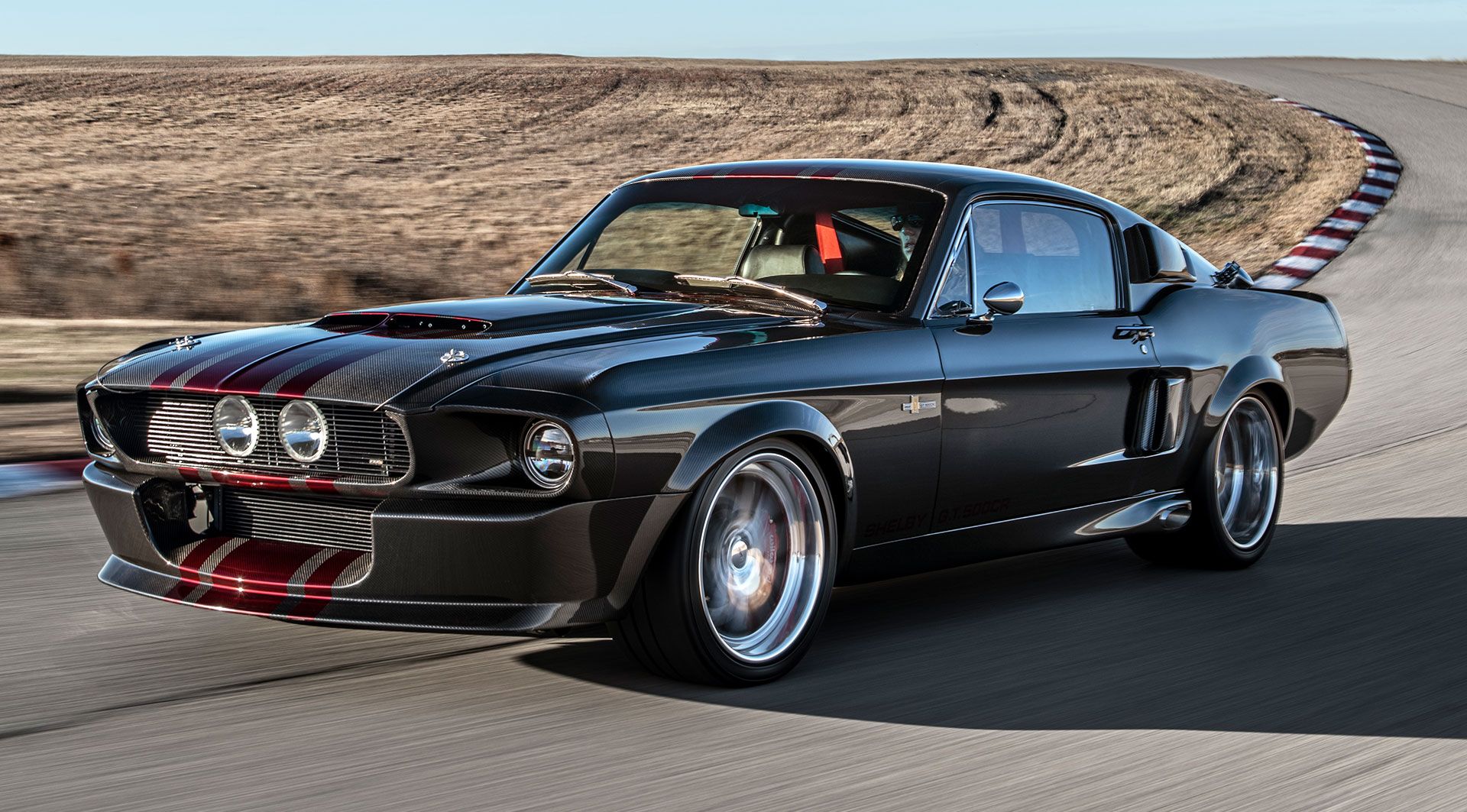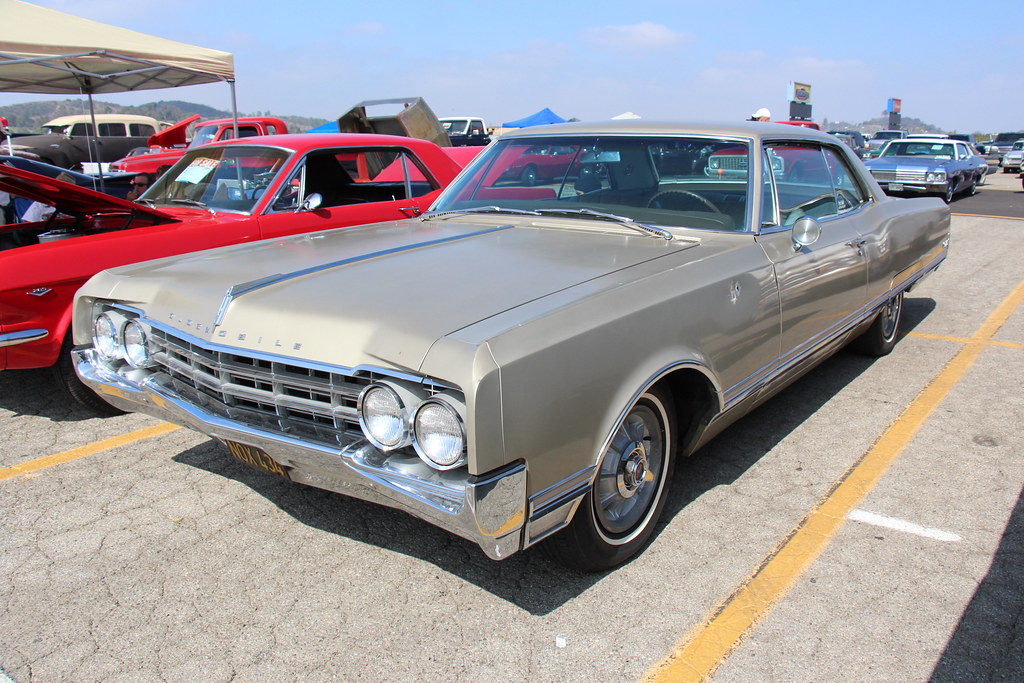
The Oldsmobile 442 stands as an undeniable icon in American muscle car history, a name evoking power, style, and a bygone era of automotive performance. For enthusiasts, the “442” designation has always been a subject of curiosity. More than random numbers, these three digits originally held a specific, technical meaning, rooted in the engineering philosophy that birthed this legendary machine.
Tracing its lineage back to the mid-1960s, the Oldsmobile 442 evolved significantly, adapting to market demands, competitive pressures, and regulatory shifts. What began as a focused option package quickly ascended to become a model in its own right, continually pushing boundaries in terms of raw power and sophisticated handling. Understanding the ‘442’ is about appreciating the journey of innovation and strategic evolution defining one of GM’s formidable offerings.
In this deep dive, we’ll strip back the layers of history, examining the precise components and design philosophies that gave the 442 its identity. From its initial explicit technical definition to later reinterpretation, we’ll explore each significant milestone. We will dissect the engineering choices, performance metrics, and cultural impact that solidified the 442’s place in the automotive hall of fame, beginning with its groundbreaking inception.

1. **The Genesis: 1964’s Original “4-4-2” Definition**The Oldsmobile 442 emerged in 1964 as a direct response to Pontiac’s unexpectedly successful GTO, which had ignited the intermediate performance market. Oldsmobile engineers, led by John Beltz, quickly developed an option package to enhance the popular Cutlass, laying the groundwork for the 442’s enduring legacy. This initial offering was immediately distinguishable by its unique, technically descriptive name.
The “4-4-2” designation in 1964 was remarkably precise, literally breaking down the vehicle’s key mechanical components. It explicitly referred to the combination of a “four-barrel carburetor,” a “four-speed manual transmission,” and “dual exhausts.” This nomenclature served as a concise technical summary, highlighting the core performance upgrades that transformed the standard F-85 and Cutlass into a genuine muscle car contender.
Each element of this original definition was critical. The four-barrel carburetor ensured optimal fuel delivery for enhanced power. The four-speed manual transmission provided drivers superior control, essential for performance driving. Dual exhausts were crucial for efficient exhaust gas flow, directly contributing to maximum horsepower. This original, hyphenated “4-4-2” badging proudly displayed these foundational technical specifications.
Car Model Information: 1969 Oldsmobile 442
Name: Oldsmobile 442
Manufacturer: Oldsmobile
ModelYears: 1964–1980,1985–1987,1990–1991
Class: Muscle car
Layout: FR layout
Caption: 1971 Oldsmobile 442
Categories: 1960s cars, 1970s cars, 1980s cars, All articles with unsourced statements, Articles with short description
Summary: The Oldsmobile 4-4-2 is a muscle car produced by Oldsmobile between the 1964 and 1987 model years. Introduced as an option package for US-sold F-85 and Cutlass models, it became a model in its own right from 1968 to 1971, spawned the Hurst/Olds in 1968, then reverted to an option through the mid-1970s. The name was revived in the 1980s on the rear-wheel drive Cutlass Supreme and early 1990s as an option package for the new front-wheel drive Cutlass Calais.
The “4-4-2” name (pronounced “Four-four-two”) derives from the original car’s four-barrel carburetor, four-speed manual transmission, and dual exhausts. It was originally written “4-4-2” (with badging showing hyphens between the numerals), and remained hyphenated throughout Oldsmobile’s use of the designation. Beginning in 1965, the 4-4-2s standard transmission was a three-speed manual along with an optional two-speed automatic and four-speed manual, but were still badged as “4-4-2″s.
Because of this change, from 1965 on, according to Oldsmobile brochures and advertisements, the 4-4-2 designation referred to the 400 cubic inch engine, four-barrel carburetor, and dual exhausts. By 1968, badging was shortened to simply “442”, but Oldsmobile brochures and internal documents continued to use the “4-4-2” model designation.
Get more information about: Oldsmobile 442
Buying a high-performing used car >>>
Brand: Oldsmobile Model: 442
Price: $43,990 Mileage: 24,000 mi.
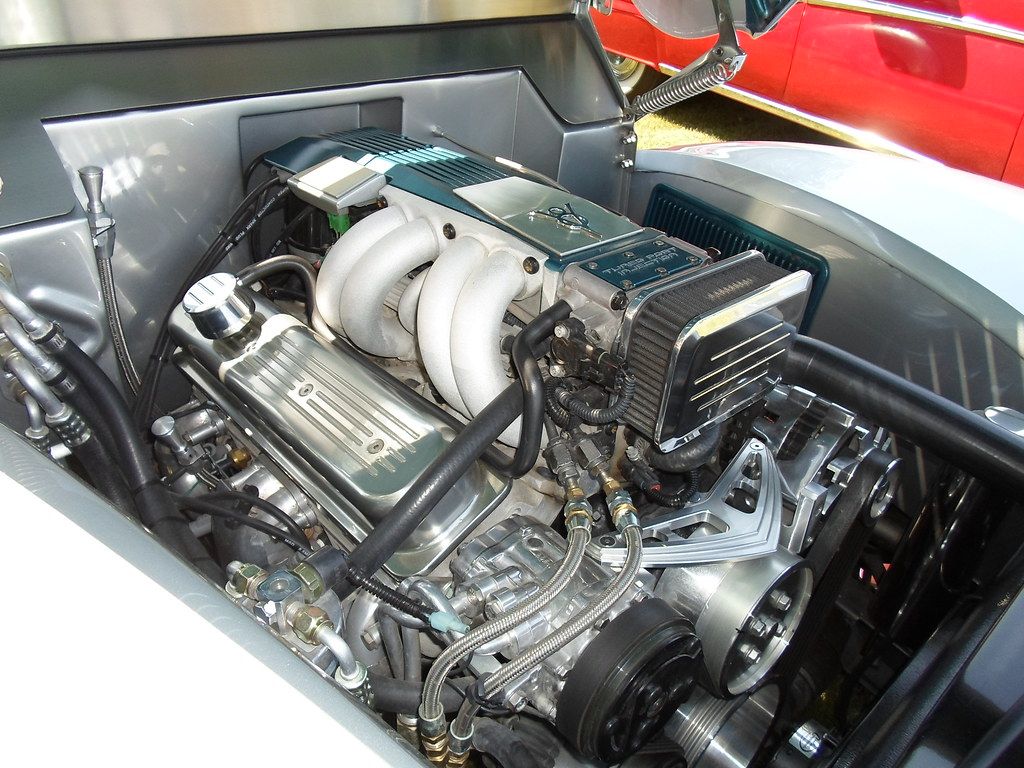
2. **The Redefinition: 1965’s Shift in the “4-4-2” Mantra**The escalating muscle car horsepower war within GM prompted a reevaluation of the 4-4-2’s specifications and definition in 1965. With Pontiac’s GTO now utilizing larger V8 engines, Oldsmobile strategically responded by upgrading the 4-4-2’s standard powerplant. This pivotal decision led to a significant change in the numerical designation’s meaning, adapting to the evolving competitive landscape.
For 1965, the 4-4-2’s standard 330 CID engine was replaced by a more potent 400 CID (6.5 L) V8. This substantial engine upgrade meant the “four-speed manual transmission” part of the original definition no longer universally applied, as a three-speed manual became the new standard transmission. Recognizing this mechanical shift, Oldsmobile brochures and advertisements officially redefined the “4-4-2.”
From 1965 onward, “4-4-2” came to signify “400 cubic inches,” a “four-barrel carburetor,” and “dual exhausts.” This new interpretation anchored the car’s identity around its engine displacement, underscoring the trend toward larger, more powerful engines. Despite this semantic shift, Oldsmobile retained the iconic “4-4-2” badging, understanding its burgeoning recognition and appeal among enthusiasts.
Car Model Information: 2004 Oldsmobile Alero GLS
Name: Oldsmobile 442
Manufacturer: Oldsmobile
ModelYears: 1964–1980,1985–1987,1990–1991
Class: Muscle car
Layout: FR layout
Caption: 1971 Oldsmobile 442
Categories: 1960s cars, 1970s cars, 1980s cars, All articles with unsourced statements, Articles with short description
Summary: The Oldsmobile 4-4-2 is a muscle car produced by Oldsmobile between the 1964 and 1987 model years. Introduced as an option package for US-sold F-85 and Cutlass models, it became a model in its own right from 1968 to 1971, spawned the Hurst/Olds in 1968, then reverted to an option through the mid-1970s. The name was revived in the 1980s on the rear-wheel drive Cutlass Supreme and early 1990s as an option package for the new front-wheel drive Cutlass Calais.
The “4-4-2” name (pronounced “Four-four-two”) derives from the original car’s four-barrel carburetor, four-speed manual transmission, and dual exhausts. It was originally written “4-4-2” (with badging showing hyphens between the numerals), and remained hyphenated throughout Oldsmobile’s use of the designation. Beginning in 1965, the 4-4-2s standard transmission was a three-speed manual along with an optional two-speed automatic and four-speed manual, but were still badged as “4-4-2″s.
Because of this change, from 1965 on, according to Oldsmobile brochures and advertisements, the 4-4-2 designation referred to the 400 cubic inch engine, four-barrel carburetor, and dual exhausts. By 1968, badging was shortened to simply “442”, but Oldsmobile brochures and internal documents continued to use the “4-4-2” model designation.
Get more information about: Oldsmobile 442
Buying a high-performing used car >>>
Brand: Oldsmobile Model: 4-4-2
Price: $1,895 Mileage: 159,807 mi.

3. **1964: The Birth of a Legend – “B09 Police Apprehender Pursuit”**Officially designated the “B09 Police Apprehender Pursuit” option, the 1964 Oldsmobile 4-4-2 was a serious performance package. Available on F-85 and Cutlass models, this initial offering represented Oldsmobile’s calculated entry into the high-performance intermediate segment. Its specifications were meticulously engineered for both speed and enhanced roadholding, laying a robust foundation.
Powering the 1964 4-4-2 was a four-barrel carbureted 330 CID (5.4 L) V8, the L79, but heavily modified. It featured shorter valve spring retainers, longer pushrods, M400 rod and main bearings, and a high lift camshaft. These modifications boosted its rated (SAE gross) output to 310 hp at 5,200 rpm. Torque remained at 355 lb⋅ft, with its peak notably raised to 3600 rpm for a more aggressive power band.
A cornerstone of the “Police Apprehender Pursuit” package was its heavy-duty (HD) suspension. This included HD springs (30% higher rating) and HD shocks (50% more valving restriction) for superior body control. A 15/16-inch front and 7/8-inch rear sway bar, coupled with boxed lower rear control arms and denser bushings, further sharpened the car’s handling dynamics. This comprehensive setup provided remarkable composure.
Other standard equipment included a Muncie M20 four-speed manual, a heavy-duty clutch, and quicker 20:1 ratio manual steering. A 3.36:1 rear axle, dual exhausts, and 14×6 HD wheels with 7.5×14 US Royal 80XP Black tires completed the package. Distinctive 4-4-2 medallions and a dual snorkel air cleaner added to its aggressive identity. Only 2,999 units were sold, making these early models quite rare. Motor Trend reported 0–60 mph in 7.5 seconds and a 15.5-second quarter-mile at 90 mph.
Car Model Information: 2001 Oldsmobile Intrigue GX
Name: Oldsmobile 442
Manufacturer: Oldsmobile
ModelYears: 1964–1980,1985–1987,1990–1991
Class: Muscle car
Layout: FR layout
Caption: 1971 Oldsmobile 442
Categories: 1960s cars, 1970s cars, 1980s cars, All articles with unsourced statements, Articles with short description
Summary: The Oldsmobile 4-4-2 is a muscle car produced by Oldsmobile between the 1964 and 1987 model years. Introduced as an option package for US-sold F-85 and Cutlass models, it became a model in its own right from 1968 to 1971, spawned the Hurst/Olds in 1968, then reverted to an option through the mid-1970s. The name was revived in the 1980s on the rear-wheel drive Cutlass Supreme and early 1990s as an option package for the new front-wheel drive Cutlass Calais.
The “4-4-2” name (pronounced “Four-four-two”) derives from the original car’s four-barrel carburetor, four-speed manual transmission, and dual exhausts. It was originally written “4-4-2” (with badging showing hyphens between the numerals), and remained hyphenated throughout Oldsmobile’s use of the designation. Beginning in 1965, the 4-4-2s standard transmission was a three-speed manual along with an optional two-speed automatic and four-speed manual, but were still badged as “4-4-2″s.
Because of this change, from 1965 on, according to Oldsmobile brochures and advertisements, the 4-4-2 designation referred to the 400 cubic inch engine, four-barrel carburetor, and dual exhausts. By 1968, badging was shortened to simply “442”, but Oldsmobile brochures and internal documents continued to use the “4-4-2” model designation.
Get more information about: Oldsmobile 442
Buying a high-performing used car >>>
Brand: Oldsmobile Model: 4-4-2
Price: $3,995 Mileage: 59,830 mi.
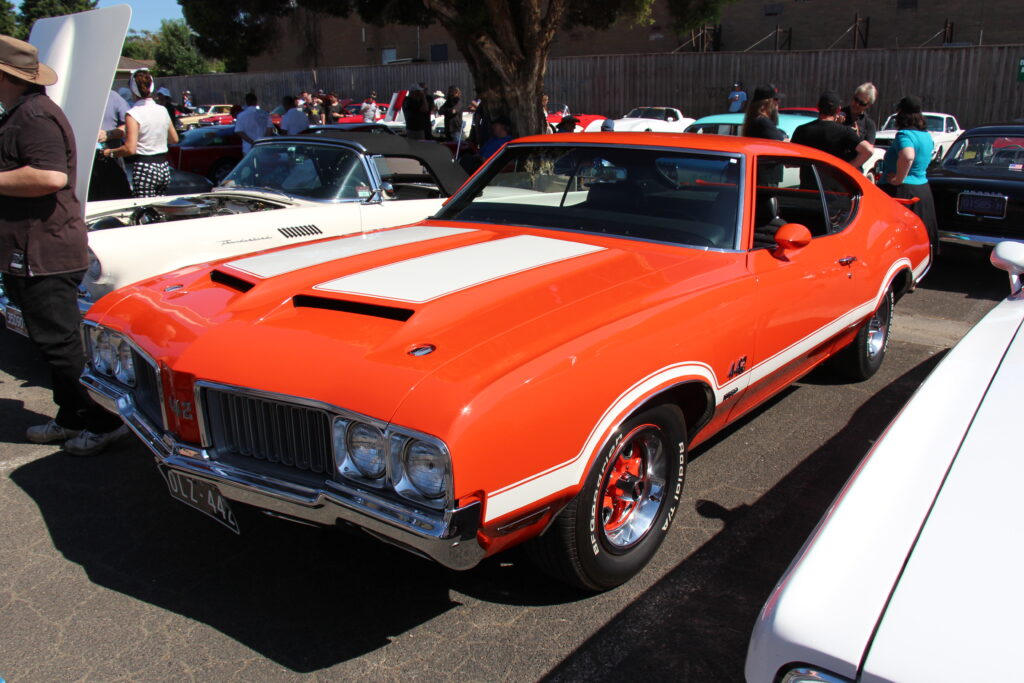
4. **1965: Power Surge – The 400 CID Era Begins**The 1965 model year marked a pivotal power surge for the Oldsmobile 4-4-2, firmly establishing its presence in the muscle car market. Responding to competitive pressures and new GM permissions, Oldsmobile replaced the 330 CID engine with a more potent 400 CID (6.5 L) V8. This strategic move fundamentally redefined the car’s performance capabilities and its core identity.
The new 400 CID engine delivered a substantial upgrade, producing 345 horsepower and a commanding 440 lb⋅ft of torque. Fueling this powerhouse was a 515 cfm Rochester four-jet carburetor, ensuring robust and consistent power delivery across the entire rev range. This significant increase in displacement and output provided the 1965 4-4-2 with a more aggressive and visceral driving experience, appealing strongly to performance enthusiasts.
Transmission options evolved to manage the augmented power. While a three-speed manual with a column shifter became standard, a floor-mounted four-speed manual remained available for maximum driver engagement. Oldsmobile’s two-speed Jetaway automatic transmission also featured as an option. Significantly, a heavy-duty three-speed manual, paired with a Hurst floor shifter, was introduced mid-year, demonstrating a commitment to robust, performance-oriented driveline choices.
Beyond mechanical upgrades, the 1965 4-4-2 received distinctive cosmetic enhancements. These included chrome body side scoops with “4-4-2” badging, chambered dual exhaust pipes, and a chrome single snout air cleaner. Inside, 4-4-2 badging adorned the dash, and standard bucket seats were offered on the Cutlass. Sales soared to 25,003 units, a testament to the model’s enhanced appeal. Performance tests showed a 0-60 mph time of 5.5 seconds (Car and Driver) and a 13.78-second quarter-mile (Modern Rod, with modifications).
Car Model Information: 2004 Oldsmobile Alero GLS
Name: Oldsmobile 442
Manufacturer: Oldsmobile
ModelYears: 1964–1980,1985–1987,1990–1991
Class: Muscle car
Layout: FR layout
Caption: 1971 Oldsmobile 442
Categories: 1960s cars, 1970s cars, 1980s cars, All articles with unsourced statements, Articles with short description
Summary: The Oldsmobile 4-4-2 is a muscle car produced by Oldsmobile between the 1964 and 1987 model years. Introduced as an option package for US-sold F-85 and Cutlass models, it became a model in its own right from 1968 to 1971, spawned the Hurst/Olds in 1968, then reverted to an option through the mid-1970s. The name was revived in the 1980s on the rear-wheel drive Cutlass Supreme and early 1990s as an option package for the new front-wheel drive Cutlass Calais.
The “4-4-2” name (pronounced “Four-four-two”) derives from the original car’s four-barrel carburetor, four-speed manual transmission, and dual exhausts. It was originally written “4-4-2” (with badging showing hyphens between the numerals), and remained hyphenated throughout Oldsmobile’s use of the designation. Beginning in 1965, the 4-4-2s standard transmission was a three-speed manual along with an optional two-speed automatic and four-speed manual, but were still badged as “4-4-2″s.
Because of this change, from 1965 on, according to Oldsmobile brochures and advertisements, the 4-4-2 designation referred to the 400 cubic inch engine, four-barrel carburetor, and dual exhausts. By 1968, badging was shortened to simply “442”, but Oldsmobile brochures and internal documents continued to use the “4-4-2” model designation.
Get more information about: Oldsmobile 442
Buying a high-performing used car >>>
Brand: Oldsmobile Model: 4-4-2
Price: $1,895 Mileage: 159,807 mi.
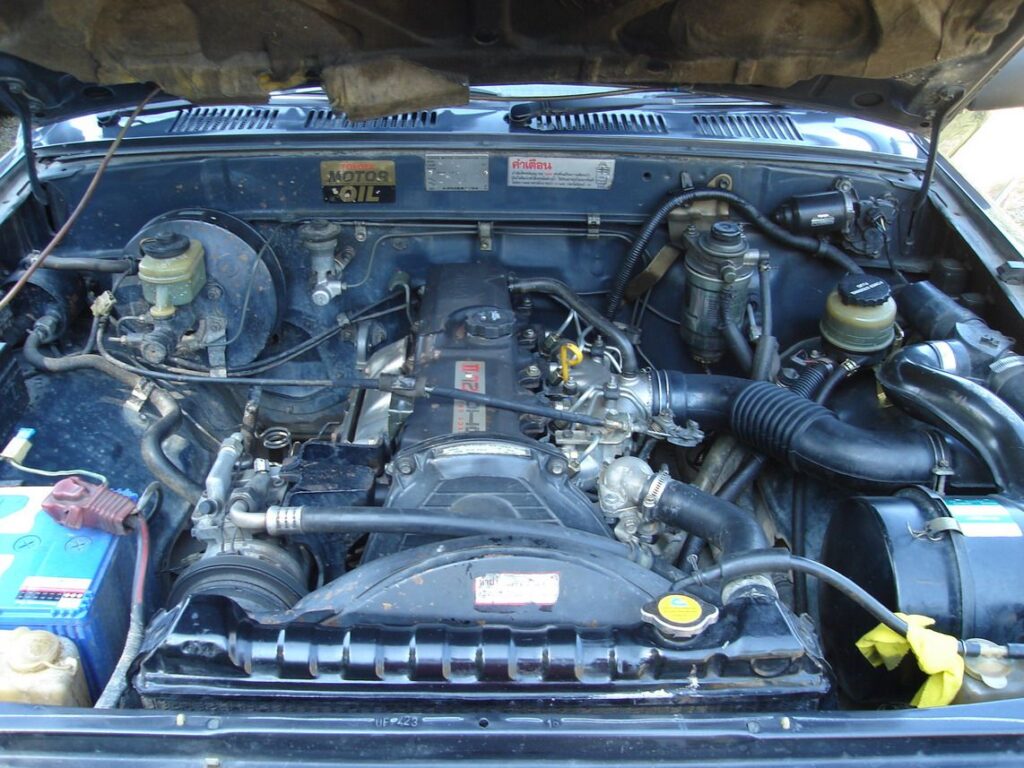
5. **1966: Triple Carburetor Thunder and the W30’s Debut**The 1966 Oldsmobile 4-4-2 continued its evolution with a modest facelift, sharing design elements with other Cutlass models while reinforcing its distinct muscle car identity. Noteworthy exterior cues included a new sweeping C-pillar on coupes with a “flying buttress” recessed rear window, and high, round rear fenders that visually amplified its muscular presence. However, the most significant developments for 1966 were under the hood.
The standard engine remained the 400 ci L78 V8, producing a robust 350 horsepower and 440 lb⋅ft of torque with a single four-barrel carburetor. For those seeking greater exhilaration, Oldsmobile offered two new optional 400 ci engines. The first was the formidable 360 hp L69, distinguished by its “Tri-Carb” setup: three two-barrel Rochester 2GC carburetors on a progressive linkage, delivering both efficiency and brute power.
The ultimate performance package for 1966 was the rare W30 option. Also rated at 360 hp (widely considered conservative), the W30 incorporated an outside-air induction system. Cool, dense air was fed directly to the carburetors via tubing from the front grille, optimizing combustion efficiency. To accommodate these hoses, the battery was strategically relocated to the trunk, a clear signal of its track-focused intent. The W30 also featured a hotter camshaft.
Factory production of the W30 was extremely limited to just 54 units, making them highly coveted collector’s items. An additional 97 units were produced for dealer installation, catering to dedicated enthusiasts. Due to the battery relocation, the W30 package was unavailable on convertible models. Performance tests of an L69 4-4-2 recorded 0–60 mph in 6.3 seconds and a quarter-mile of 14.8 seconds at 97 mph, underscoring its significant capabilities.
Car Model Information: 2004 Oldsmobile Alero GLS
Name: Oldsmobile 442
Manufacturer: Oldsmobile
ModelYears: 1964–1980,1985–1987,1990–1991
Class: Muscle car
Layout: FR layout
Caption: 1971 Oldsmobile 442
Categories: 1960s cars, 1970s cars, 1980s cars, All articles with unsourced statements, Articles with short description
Summary: The Oldsmobile 4-4-2 is a muscle car produced by Oldsmobile between the 1964 and 1987 model years. Introduced as an option package for US-sold F-85 and Cutlass models, it became a model in its own right from 1968 to 1971, spawned the Hurst/Olds in 1968, then reverted to an option through the mid-1970s. The name was revived in the 1980s on the rear-wheel drive Cutlass Supreme and early 1990s as an option package for the new front-wheel drive Cutlass Calais.
The “4-4-2” name (pronounced “Four-four-two”) derives from the original car’s four-barrel carburetor, four-speed manual transmission, and dual exhausts. It was originally written “4-4-2” (with badging showing hyphens between the numerals), and remained hyphenated throughout Oldsmobile’s use of the designation. Beginning in 1965, the 4-4-2s standard transmission was a three-speed manual along with an optional two-speed automatic and four-speed manual, but were still badged as “4-4-2″s.
Because of this change, from 1965 on, according to Oldsmobile brochures and advertisements, the 4-4-2 designation referred to the 400 cubic inch engine, four-barrel carburetor, and dual exhausts. By 1968, badging was shortened to simply “442”, but Oldsmobile brochures and internal documents continued to use the “4-4-2” model designation.
Get more information about: Oldsmobile 442
Buying a high-performing used car >>>
Brand: Oldsmobile Model: 4-4-2
Price: $2,100 Mileage: 198,348 mi.
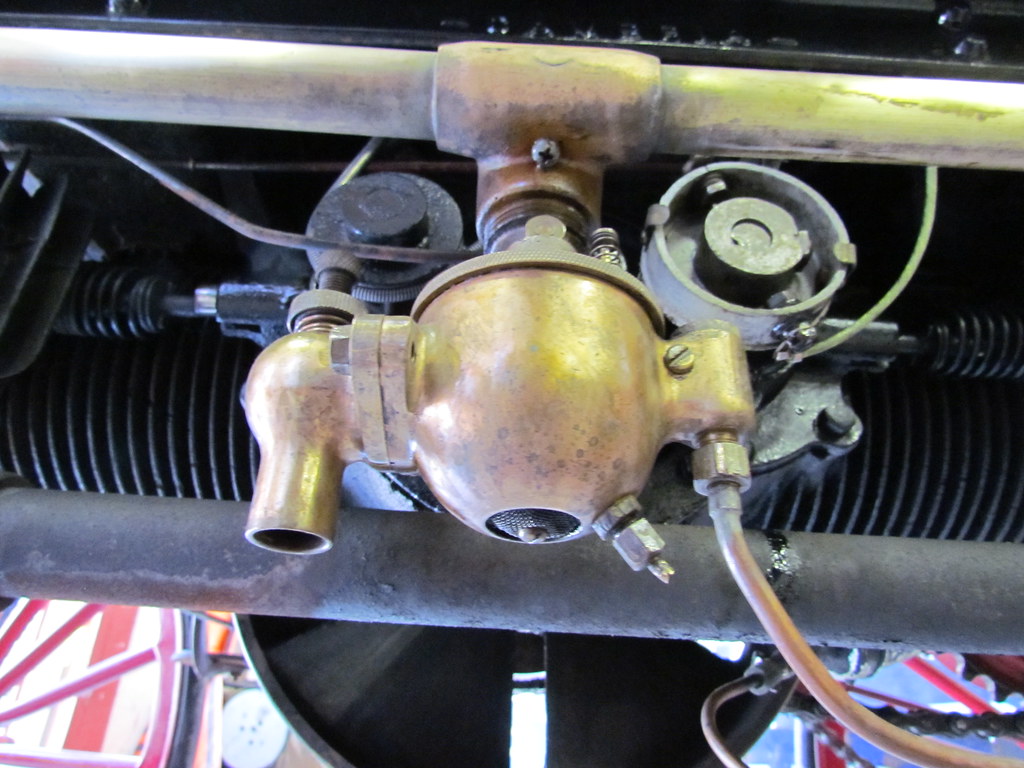
6. **1967: Refinements, Regulation, and the Evolving W30**The 1967 Oldsmobile 4-4-2 experienced a period of refinements and adaptations, navigating both subtle stylistic updates and significant corporate regulatory changes. Externally, minor trim revisions and a distinctive louvered hood enhanced its aggressive aesthetics. Internally, the base engine received an intake valve size increase, from 1.99 to 2.067 inches, improving airflow and combustion efficiency.
A key mechanical upgrade for 1967 was the availability of the three-speed Turbo Hydra-Matic automatic transmission with Switch Pitch, replacing the older two-speed Jetaway. This brought the 4-4-2’s automatic offerings in line with other GM muscle cars, providing smoother shifts and efficient power delivery. Manual options remained robust, with a heavy-duty floor-mounted three-speed manual standard, and Muncie M-20/M-21 four-speeds optional, all featuring Hurst shifters. Front disc brakes were also a new option, significantly enhancing stopping power.
However, 1967 brought a pivotal GM corporate mandate: a ban on multiple carburetors for all vehicles except Corvette and Corvair. This directly led to the demise of the L69’s triple carburetors. Oldsmobile, nonetheless, adapted by ensuring the revered W30 performance package remained available. The 1967 W30 saw the four-barrel Quadrajet carburetor replace the tri-carb setup, demonstrating continued high performance within new constraints.
A striking visual signature of the W30 package was the inclusion of new red plastic inner fender liners. To meet NHRA homologation rules, 502 factory W30 engines were built, supplemented by dealer-installed packages. For 1967, the 4-4-2 package was exclusively based on the top-line Cutlass Supreme series. Standard equipment included Strato bucket seats, full carpeting, heavy-duty suspension, and wide-oval tires, blending luxury with performance. Production rose slightly to 24,833 units.
Car Model Information: 2001 Oldsmobile Intrigue GX
Name: Oldsmobile 442
Manufacturer: Oldsmobile
ModelYears: 1964–1980,1985–1987,1990–1991
Class: Muscle car
Layout: FR layout
Caption: 1971 Oldsmobile 442
Categories: 1960s cars, 1970s cars, 1980s cars, All articles with unsourced statements, Articles with short description
Summary: The Oldsmobile 4-4-2 is a muscle car produced by Oldsmobile between the 1964 and 1987 model years. Introduced as an option package for US-sold F-85 and Cutlass models, it became a model in its own right from 1968 to 1971, spawned the Hurst/Olds in 1968, then reverted to an option through the mid-1970s. The name was revived in the 1980s on the rear-wheel drive Cutlass Supreme and early 1990s as an option package for the new front-wheel drive Cutlass Calais.
The “4-4-2” name (pronounced “Four-four-two”) derives from the original car’s four-barrel carburetor, four-speed manual transmission, and dual exhausts. It was originally written “4-4-2” (with badging showing hyphens between the numerals), and remained hyphenated throughout Oldsmobile’s use of the designation. Beginning in 1965, the 4-4-2s standard transmission was a three-speed manual along with an optional two-speed automatic and four-speed manual, but were still badged as “4-4-2″s.
Because of this change, from 1965 on, according to Oldsmobile brochures and advertisements, the 4-4-2 designation referred to the 400 cubic inch engine, four-barrel carburetor, and dual exhausts. By 1968, badging was shortened to simply “442”, but Oldsmobile brochures and internal documents continued to use the “4-4-2” model designation.
Get more information about: Oldsmobile 442
Buying a high-performing used car >>>
Brand: Oldsmobile Model: 4-4-2
Price: $3,995 Mileage: 59,830 mi.

7. **1968: The “442” Becomes a Standalone Model**The 1968 model year marked a significant evolution for the Oldsmobile 4-4-2, elevating its status from a performance option package to a distinct, standalone model. This change, which persisted through 1971, affirmed the 4-4-2’s established identity and popularity within the muscle car segment. Built on a redesigned A-body platform, the 1968 4-4-2 introduced refined engineering and fresh styling.
The 1968 4-4-2 featured a shorter 112-inch wheelbase, contributing to improved agility. While still designated 400 CID, the engine was re-engineered, now based on the new 455 V8’s longer 4.25-inch stroke, with a reduced bore of 3.87 inches. This configuration resulted in a lower torque peak (3000–3200 rpm), providing strong low-end acceleration due to a milder base camshaft. Base engine ratings were 350 hp with manuals and 325 hp with automatics; W-30 models maintained 360 hp.
Visually, the 1968 4-4-2 carried distinctive features. All standard engines sported a bronze–copper color, topped with a fire-red air cleaner, echoing the 1967 aesthetic. W-30 variants were easily recognizable by their ram air intake hoses, feeding chrome-topped dual snorkel black air cleaners from special under-bumper scoops, highlighted by bright red plastic fender wells—a clear performance signature.
The 1968 model also introduced new federal safety mandates, including side marker lights and front outboard shoulder belts. It was the final year for vent windows on hardtops and convertibles. A unique design element was its distinctive rear bumpers, which integrated exhaust cutouts and specialized exhaust tips for its dual exhaust system. Sales exceeded 33,000 units. Car Life recorded a 0–60 mph time of 7.0 seconds and a quarter-mile of 15.13 seconds at 92 mph for a Hydramatic-equipped model, while a W-30 blasted the quarter-mile in 13.3 seconds at 103.30 mph.
The Oldsmobile 442’s journey through the muscle car era and beyond is a fascinating narrative of adaptation, power shifts, and enduring appeal. After its establishment as a standalone model, the 442 continued to evolve, facing new challenges from increasingly stringent regulations and changing market demands. The second phase of its legacy saw innovative collaborations and strategic adjustments, ensuring the 442 remained a potent force and a cherished nameplate even as the automotive landscape transformed around it. We now continue our exploration, delving into the later iterations and revivals that cemented the 442’s place in history.
Car Model Information: 2004 Oldsmobile Alero GLS
Name: Oldsmobile 442
Manufacturer: Oldsmobile
ModelYears: 1964–1980,1985–1987,1990–1991
Class: Muscle car
Layout: FR layout
Caption: 1971 Oldsmobile 442
Categories: 1960s cars, 1970s cars, 1980s cars, All articles with unsourced statements, Articles with short description
Summary: The Oldsmobile 4-4-2 is a muscle car produced by Oldsmobile between the 1964 and 1987 model years. Introduced as an option package for US-sold F-85 and Cutlass models, it became a model in its own right from 1968 to 1971, spawned the Hurst/Olds in 1968, then reverted to an option through the mid-1970s. The name was revived in the 1980s on the rear-wheel drive Cutlass Supreme and early 1990s as an option package for the new front-wheel drive Cutlass Calais.
The “4-4-2” name (pronounced “Four-four-two”) derives from the original car’s four-barrel carburetor, four-speed manual transmission, and dual exhausts. It was originally written “4-4-2” (with badging showing hyphens between the numerals), and remained hyphenated throughout Oldsmobile’s use of the designation. Beginning in 1965, the 4-4-2s standard transmission was a three-speed manual along with an optional two-speed automatic and four-speed manual, but were still badged as “4-4-2″s.
Because of this change, from 1965 on, according to Oldsmobile brochures and advertisements, the 4-4-2 designation referred to the 400 cubic inch engine, four-barrel carburetor, and dual exhausts. By 1968, badging was shortened to simply “442”, but Oldsmobile brochures and internal documents continued to use the “4-4-2” model designation.
Get more information about: Oldsmobile 442
Buying a high-performing used car >>>
Brand: Oldsmobile Model: 4-4-2
Price: $1,895 Mileage: 159,807 mi.
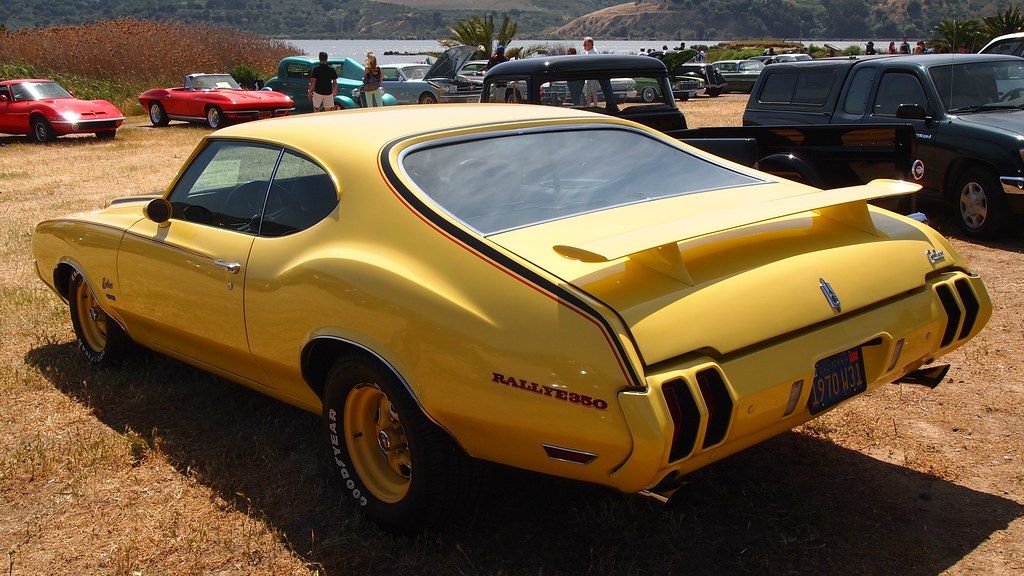
8. **1969: Subtle Refinements and the Hurst/Olds Returns**As the 1960s drew to a close, the 1969 Oldsmobile 4-4-2 maintained a strong resemblance to its 1968 predecessor, yet incorporated several key updates. Externally, the car featured a distinct division tooth between the grilles, new trunk lid inlets for the tail lights, and for Holiday Coupes and convertibles, the deletion of wing windows, giving a cleaner profile. The most noticeable visual change for the 4-4-2 was the dramatic increase in the size of its badging, making its identity unmistakable.
Inside, the 1969 models enhanced safety and convenience with a new steering lock ignition switch located on the steering column, and standard headrests for the front seats. Twin hood stripes became an available option, perfectly accentuating the newly designed dual-bulged hood, emphasizing the car’s aggressive stance. Mechanically, the optional disc brakes were upgraded with more modern single-piston calipers, and the exhaust manifolds received a new center divider, optimizing performance.
While the standard 4-4-2 engine changes were minimal, Oldsmobile introduced an intriguing new high-performance option: the W-32 engine. This package was specifically designed for automatic transmissions and incorporated the W-30’s forced air induction system, though it utilized the base engine’s milder camshaft. A total of 297 W-32 units were produced, including 25 sport coupes and 25 convertibles, marking them as rare and desirable.
The iconic Hurst/Olds also made a triumphant return in 1969, building upon its successful 1968 debut. These special editions featured a striking cameo white and fire frost gold striped paint scheme, alongside large, functional ram air mailbox hood scoops and a distinctive rear pedestal spoiler. Riding on 15-inch SSII chrome-plated rims and adorned with European racing mirrors, the 1969 Hurst/Olds was powered by a 380-horsepower 455 CID V8, slightly detuned from the previous year. Production was limited to 906 Holiday Coupes, plus 6 prototypes and 2 convertibles, making them highly collectible. This formidable combination delivered impressive performance, with a 0-60 mph time of 5.9 seconds and a quarter-mile sprint in 14.03 seconds at 101 mph.
Car Model Information: 2004 Oldsmobile Alero GLS
Name: Oldsmobile 442
Manufacturer: Oldsmobile
ModelYears: 1964–1980,1985–1987,1990–1991
Class: Muscle car
Layout: FR layout
Caption: 1971 Oldsmobile 442
Categories: 1960s cars, 1970s cars, 1980s cars, All articles with unsourced statements, Articles with short description
Summary: The Oldsmobile 4-4-2 is a muscle car produced by Oldsmobile between the 1964 and 1987 model years. Introduced as an option package for US-sold F-85 and Cutlass models, it became a model in its own right from 1968 to 1971, spawned the Hurst/Olds in 1968, then reverted to an option through the mid-1970s. The name was revived in the 1980s on the rear-wheel drive Cutlass Supreme and early 1990s as an option package for the new front-wheel drive Cutlass Calais.
The “4-4-2” name (pronounced “Four-four-two”) derives from the original car’s four-barrel carburetor, four-speed manual transmission, and dual exhausts. It was originally written “4-4-2” (with badging showing hyphens between the numerals), and remained hyphenated throughout Oldsmobile’s use of the designation. Beginning in 1965, the 4-4-2s standard transmission was a three-speed manual along with an optional two-speed automatic and four-speed manual, but were still badged as “4-4-2″s.
Because of this change, from 1965 on, according to Oldsmobile brochures and advertisements, the 4-4-2 designation referred to the 400 cubic inch engine, four-barrel carburetor, and dual exhausts. By 1968, badging was shortened to simply “442”, but Oldsmobile brochures and internal documents continued to use the “4-4-2” model designation.
Get more information about: Oldsmobile 442
Buying a high-performing used car >>>
Brand: Oldsmobile Model: 4-4-2
Price: $1,895 Mileage: 159,807 mi.
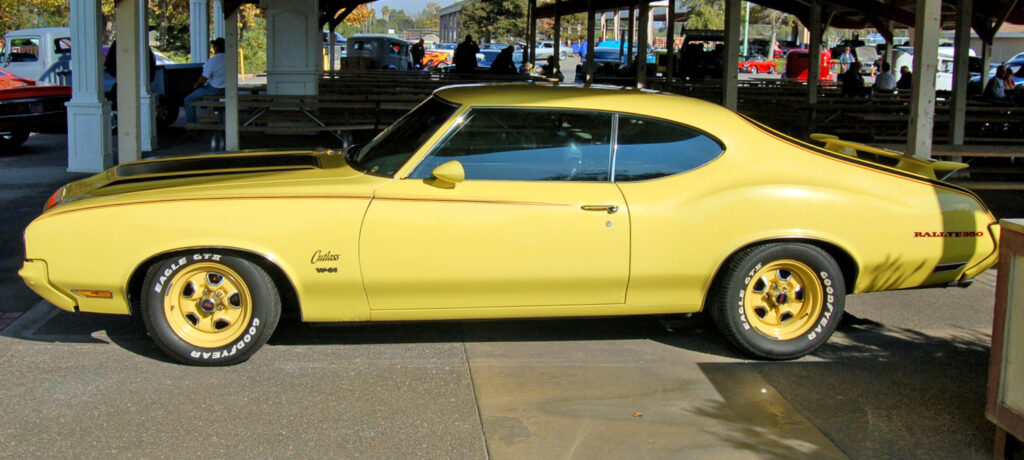
9. **1970: The Pinnacle of Performance and the 455 Standard**Many enthusiasts and historians consider 1970 to be the zenith of Oldsmobile’s muscle car performance. This pivotal year saw General Motors lift its restriction on engine size for intermediate models, allowing Oldsmobile to make a significant move. In response to the ongoing horsepower arms race, the potent Olds 455 V8 became the standard engine for the 4-4-2, a decision that cemented its performance credentials.
With the 455 V8 as standard, output reached an impressive 365 horsepower and a commanding 500 lb⋅ft of torque. For those seeking even greater exhilaration, the W30 option boosted output to 370 horsepower. Identifying the 1970 model year is straightforward, thanks to its unique styling cues, including vertical bars in its chrome grille, rectangular parking lights integrated into the front bumper, and distinct vertical tail lights, giving it a powerful and sophisticated aesthetic.
The combination of a revised body style and dramatically increased performance earned the 4-4-2 the prestigious honor of serving as the pace car for the Indianapolis 500 race in 1970. The optional high-performance W-30 package further amplified its capabilities, featuring a lightweight fiberglass hood (option W25) with functional air scoops, a low-restriction air cleaner, an aluminum intake manifold, and a specialized camshaft, cylinder heads, distributor, and carburetor. Remarkably, two W-30 equipped 4-4-2 Vista Cruisers were even produced via special order.
Performance figures for the 1970 4-4-2 were undeniably strong. Motor Trend recorded a 4-4-2 W-30 with a four-speed manual transmission and 3.91:1 rear gears completing the quarter-mile in 14.2 seconds at 102 mph. While the tested figure was excellent, Oldsmobile engineers reportedly achieved an even quicker 13.7 seconds with a fresh tune, underscoring the car’s true potential. New options for this year included GM’s variable-ratio power steering, a console-mounted Hurst Dual/Gate shifter for Turbo Hydra-matic transmissions, and an aluminum differential housing and cover, showcasing Oldsmobile’s commitment to advanced features and performance.
Car Model Information: 2001 Oldsmobile Intrigue GX
Name: Oldsmobile 442
Manufacturer: Oldsmobile
ModelYears: 1964–1980,1985–1987,1990–1991
Class: Muscle car
Layout: FR layout
Caption: 1971 Oldsmobile 442
Categories: 1960s cars, 1970s cars, 1980s cars, All articles with unsourced statements, Articles with short description
Summary: The Oldsmobile 4-4-2 is a muscle car produced by Oldsmobile between the 1964 and 1987 model years. Introduced as an option package for US-sold F-85 and Cutlass models, it became a model in its own right from 1968 to 1971, spawned the Hurst/Olds in 1968, then reverted to an option through the mid-1970s. The name was revived in the 1980s on the rear-wheel drive Cutlass Supreme and early 1990s as an option package for the new front-wheel drive Cutlass Calais.
The “4-4-2” name (pronounced “Four-four-two”) derives from the original car’s four-barrel carburetor, four-speed manual transmission, and dual exhausts. It was originally written “4-4-2” (with badging showing hyphens between the numerals), and remained hyphenated throughout Oldsmobile’s use of the designation. Beginning in 1965, the 4-4-2s standard transmission was a three-speed manual along with an optional two-speed automatic and four-speed manual, but were still badged as “4-4-2″s.
Because of this change, from 1965 on, according to Oldsmobile brochures and advertisements, the 4-4-2 designation referred to the 400 cubic inch engine, four-barrel carburetor, and dual exhausts. By 1968, badging was shortened to simply “442”, but Oldsmobile brochures and internal documents continued to use the “4-4-2” model designation.
Get more information about: Oldsmobile 442
Buying a high-performing used car >>>
Brand: Oldsmobile Model: 4-4-2
Price: $3,995 Mileage: 59,830 mi.

10. **1971: Emissions Regulations and Softening Muscle Car Sales**The 1971 model year brought a tangible shift in the automotive landscape, marked by a softening of muscle car sales across the industry. Despite this broader trend, the Oldsmobile 4-4-2 returned with largely minor modifications from the previous year, attempting to maintain its identity in a changing market. However, significant changes were taking place under the hood, dictated by new environmental mandates.
A corporate policy by GM, anticipating the introduction of catalytic converters in 1975, mandated that all engines operate on lower-octane regular leaded, low-lead, or unleaded gasoline. This directive necessitated lower compression ratios, directly impacting engine output across GM’s entire lineup. For the 1971 4-4-2, the base 455 engine saw its rating reduced to 340 horsepower, while the W-30 variant was rated at 350 horsepower, a noticeable decrease from the previous year’s peak.
Further reflecting this shift, the W-27 option, which had previously offered a full aluminum differential housing, was downgraded to an aluminum cover for the standard cast iron differential. In terms of availability, the 1971 4-4-2 was offered exclusively as a hardtop coupe or convertible, with the sport coupe disappearing from the lineup for the first time since 1964, only to make a return in 1972.
Appearance-wise, the 1971 models were distinguished by a black grille with a silver surround, complemented by silver headlight bezels. Round parking lights in the front bumper and horizontal tail lights completed the revised look. Performance figures, as reported by Road Test magazine, showed a 4-4-2 equipped with the TH400 automatic transmission achieving a quarter-mile time of 15.2 seconds at 99 mph and a 0-60 mph acceleration in 8.9 seconds, reflecting the impacts of the reduced compression and lower horsepower ratings.
Car Model Information: 2004 Oldsmobile Alero GLS
Name: Oldsmobile 442
Manufacturer: Oldsmobile
ModelYears: 1964–1980,1985–1987,1990–1991
Class: Muscle car
Layout: FR layout
Caption: 1971 Oldsmobile 442
Categories: 1960s cars, 1970s cars, 1980s cars, All articles with unsourced statements, Articles with short description
Summary: The Oldsmobile 4-4-2 is a muscle car produced by Oldsmobile between the 1964 and 1987 model years. Introduced as an option package for US-sold F-85 and Cutlass models, it became a model in its own right from 1968 to 1971, spawned the Hurst/Olds in 1968, then reverted to an option through the mid-1970s. The name was revived in the 1980s on the rear-wheel drive Cutlass Supreme and early 1990s as an option package for the new front-wheel drive Cutlass Calais.
The “4-4-2” name (pronounced “Four-four-two”) derives from the original car’s four-barrel carburetor, four-speed manual transmission, and dual exhausts. It was originally written “4-4-2” (with badging showing hyphens between the numerals), and remained hyphenated throughout Oldsmobile’s use of the designation. Beginning in 1965, the 4-4-2s standard transmission was a three-speed manual along with an optional two-speed automatic and four-speed manual, but were still badged as “4-4-2″s.
Because of this change, from 1965 on, according to Oldsmobile brochures and advertisements, the 4-4-2 designation referred to the 400 cubic inch engine, four-barrel carburetor, and dual exhausts. By 1968, badging was shortened to simply “442”, but Oldsmobile brochures and internal documents continued to use the “4-4-2” model designation.
Get more information about: Oldsmobile 442
Buying a high-performing used car >>>
Brand: Oldsmobile Model: 4-4-2
Price: $2,100 Mileage: 198,348 mi.

11. **1972: The 4-4-2 Reverts to an Option Package**By 1972, the muscle car era was undeniably in decline, battered by the dual pressures of soaring insurance rates and increasingly stringent Federal emissions standards. In response to these market realities, the illustrious 4-4-2 name reverted from a standalone model to an appearance and handling option package, designated option code W-29. This package was available on the Cutlass Holiday coupe, Cutlass S sport coupe and Holiday coupe, and the Cutlass Supreme convertible, though notably not on the Cutlass Supreme notchback hardtops.
The W-29 option package, which carried a surprisingly modest sticker price of $29, delivered substantial performance-oriented features. It included the “FE2” suspension upgrades, comprising heavy-duty springs and shocks, front and rear sway bars, and boxed lower rear control arms. The package also featured 14- by 7-inch wheels, distinctive side striping, fender and decklid badging, faux hood louvers, and a unique grille, all contributing to a visually assertive presence.
While the W-29 package was comprehensive, the standard engine for these 4-4-2 equipped models was the Oldsmobile 350 V8. However, enthusiasts could still opt for the more powerful L75 455 CID V8, which came paired with rear bumper cutouts specifically designed for its exhaust tips, maintaining a hint of the 4-4-2’s performance heritage. Interior trims for the 1972 4-4-2 varied significantly depending on the specific bodystyle chosen, echoing the trim differences seen in the early 1964–66 models.
For those seeking ultimate performance, the W30 option remained available, featuring the L77 455 engine, now rated at 300 horsepower and 410 lb⋅ft of torque with standard low-restriction dual exhausts. The W30 package also included a lightweight aluminum intake manifold, the W25 fiberglass ram-air hood, an anti-spin differential with 3.42:1 gears (3.73:1 available), and heavy-duty cooling. Due to low vacuum at idle, air conditioning was not available with the W30, and power brakes were only offered with an automatic transmission. Production was exceptionally limited, with only 113 W30 convertibles and 659 W30 coupes built in 1972.
Adding to the year’s significant offerings, a special edition Hurst/Olds once again served as the Indianapolis 500 pace car. These H/O models were based on the Cutlass Supreme Holiday coupe (a body style not otherwise available with the 4-4-2 option) and the Cutlass Supreme convertible. Both Hurst/Olds variants came standard with a 270-net horsepower 455 Rocket V8 or an optional 300-net horsepower W-30 455, all mated to Turbo 400 transmissions with iconic Hurst Dual Gate shifters, ensuring that even in a transitional year, high-performance Oldsmobiles still turned heads.
Car Model Information: 2004 Oldsmobile Alero GLS
Name: Oldsmobile 442
Manufacturer: Oldsmobile
ModelYears: 1964–1980,1985–1987,1990–1991
Class: Muscle car
Layout: FR layout
Caption: 1971 Oldsmobile 442
Categories: 1960s cars, 1970s cars, 1980s cars, All articles with unsourced statements, Articles with short description
Summary: The Oldsmobile 4-4-2 is a muscle car produced by Oldsmobile between the 1964 and 1987 model years. Introduced as an option package for US-sold F-85 and Cutlass models, it became a model in its own right from 1968 to 1971, spawned the Hurst/Olds in 1968, then reverted to an option through the mid-1970s. The name was revived in the 1980s on the rear-wheel drive Cutlass Supreme and early 1990s as an option package for the new front-wheel drive Cutlass Calais.
The “4-4-2” name (pronounced “Four-four-two”) derives from the original car’s four-barrel carburetor, four-speed manual transmission, and dual exhausts. It was originally written “4-4-2” (with badging showing hyphens between the numerals), and remained hyphenated throughout Oldsmobile’s use of the designation. Beginning in 1965, the 4-4-2s standard transmission was a three-speed manual along with an optional two-speed automatic and four-speed manual, but were still badged as “4-4-2″s.
Because of this change, from 1965 on, according to Oldsmobile brochures and advertisements, the 4-4-2 designation referred to the 400 cubic inch engine, four-barrel carburetor, and dual exhausts. By 1968, badging was shortened to simply “442”, but Oldsmobile brochures and internal documents continued to use the “4-4-2” model designation.
Get more information about: Oldsmobile 442
Buying a high-performing used car >>>
Brand: Oldsmobile Model: 4-4-2
Price: $1,895 Mileage: 159,807 mi.
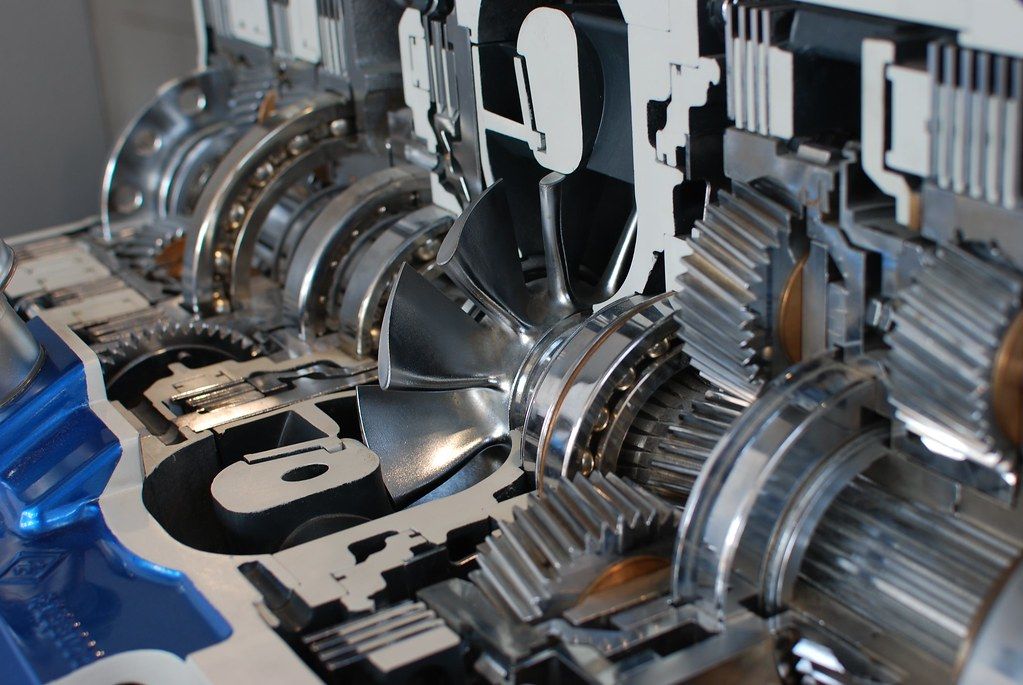
12. **1973-1977: The Colonnade Era and Further Reductions**The 1973 model year introduced the striking “Colonnade” body style, a design that had been delayed until 1973 due to an auto workers’ strike. These new models were characterized by massive five-foot long doors, newly mandated energy-absorbing bumpers, fixed rear windows, and a reinforced roof, features all implemented in anticipation of future rollover safety standards. These design choices made the 1973 cars notably heavier and slightly larger than their 1972 predecessors.
Consistent with 1972, the 4-4-2 retained its status as a handling and appearance package (code W-29), available on both the Cutlass and Cutlass “S” models. The package included a faux louvered hood, the FE2 suspension, specific grilles, emblems, and distinctive stripes. While items like dual exhaust and Super Stock wheels were optional, this era marked an industry-wide shift away from large, powerful cars, reflected in the adoption of net horsepower figures rather than the earlier gross ratings. The once mighty W-30, which boasted 300 horsepower in 1972, had by 1973 been reclassified as solely a trim package.
Engine offerings continued to reflect a changing landscape. The L77 “V” code 455 was available, but only paired with the four-speed wide-ratio M-20 transmission, a pairing that would mark 1973 as the final year for the four-speed manual in the Oldsmobile A-body. Other options included the L75 “U” code 455 automatic and various 350 V8 configurations, with power figures seeing further reductions. Interior trims evolved, offering options from basic bench seats with rubber floor mats on base Cutlass coupes to more luxurious cloth-and-vinyl or all-vinyl bench seats, or optional swiveling Strato bucket seats in the Cutlass S, adding a touch of sporty comfort.
For 1974, the 4-4-2 received a facelift aligning with other Cutlass models, featuring a revised grille and new flush taillights to complement the now-mandated 5 mph rear bumper. Power steering and the Turbo Hydra-matic transmission became standard equipment across all Cutlass models, including the 4-4-2, signaling a shift towards convenience. Notably, the four-speed manual transmission with a Hurst shifter was dropped from the option list, further underscoring the changing market dynamics, while radial tires were introduced as a new option.
Continuing the trend into 1975, the 4-4-2 sported revised vertical-bar grilles and stacked taillight lenses. With fuel economy becoming a primary concern following the 1973–74 energy crisis, the 1975 4-4-2, for the first time since its 1964 introduction, came standard with a six-cylinder engine (Chevrolet’s 250 cubic-inch inline unit), or a new Oldsmobile-built 260 cubic-inch Rocket V8 designed for efficiency. All engines were now fitted with catalytic converters, requiring unleaded gasoline and effectively ending true dual exhausts. The 1976 and 1977 models continued as appearance/handling packages, with the 1976 model sharing a new aerodynamic sloped nose designed for NASCAR, and the 1977 4-4-2 featuring Buick’s 231 cubic-inch V6 as its base engine, with the new Oldsmobile 403 cubic-inch Rocket V8 replacing the 455 as the top engine option, signaling the very distinct evolution of the once-dominant muscle car.

13. **1978-1980: The Downsized A-Body Era**The 4-4-2 nameplate continued its journey into the 1978 model year, transitioning to the newly downsized A-body platform. This iteration of the 4-4-2 was offered as an option package on the semi-fastback “Aeroback” Cutlass Salon, which now served as the entry-level trim within the popular Cutlass lineup. Reflecting the evolving priorities of the era, the 4-4-2 package was available with a diverse array of powertrains.
Engine options for the 1978 4-4-2 included the 231 cubic-inch two-barrel Buick V6, the 260 cubic-inch two-barrel Oldsmobile V8, and 305 cubic-inch Chevrolet V8s, available in either two- or four-barrel configurations. A three-speed manual transmission was standard, while a three-speed THM200 automatic was optional across all engine choices. For enhanced driver engagement, a Borg-Warner five-speed manual was offered with the 260 V8, and a four-speed Saginaw manual could be paired with the 305 V8, providing a range of choices for consumers.
Visually, the 1978 4-4-2 distinguished itself with contrasting striping along the rocker panels, lower doors, and wheelwells, complemented by specific badging on the rear trunk and interior emblems. Any other options available on the Cutlass Salon could also be ordered with the 4-4-2 package, offering a degree of personalization. The 1979 model year saw the 4-4-2 continue on the Cutlass Salon body style, notably marked by the return of the Hurst/Olds, which this time was based on the Cutlass Calais platform, signifying renewed performance interest.
For 1980, the 4-4-2 migrated to the more traditional notchback Cutlass Calais body, and with this shift, some of its performance heritage began to resurface. It gained a larger 350 cubic-inch Oldsmobile V8 engine, an option exclusively available to the 4-4-2 within the Cutlass line, while the V6 and 305 Chevrolet V8 were no longer offered. The model featured W-30 badging on the front fenders, accompanied by less dramatic graphics compared to earlier years, indicating a more refined approach to its performance aesthetics.
These 1980 4-4-2s shared an identical powertrain with the 1979 Hurst/Olds, though without the specific Hurst shifter, and were exclusively available in striking gold over white or gold over black paint schemes. A total of 886 units were built for 1980, with 540 in black and 346 in white, marking them as limited editions. The W-30 4-4-2 appearance and handling package, which added a significant layer of performance and styling to the $6,919.57 MSRP Cutlass Calais, included rallye suspension, specific tires, and a sport console, though this package was notably not available in California. Following this short revival, the 4-4-2 would not be available from 1981 to 1984.
Car Model Information: 2004 Oldsmobile Alero GLS
Name: Oldsmobile 442
Manufacturer: Oldsmobile
ModelYears: 1964–1980,1985–1987,1990–1991
Class: Muscle car
Layout: FR layout
Caption: 1971 Oldsmobile 442
Categories: 1960s cars, 1970s cars, 1980s cars, All articles with unsourced statements, Articles with short description
Summary: The Oldsmobile 4-4-2 is a muscle car produced by Oldsmobile between the 1964 and 1987 model years. Introduced as an option package for US-sold F-85 and Cutlass models, it became a model in its own right from 1968 to 1971, spawned the Hurst/Olds in 1968, then reverted to an option through the mid-1970s. The name was revived in the 1980s on the rear-wheel drive Cutlass Supreme and early 1990s as an option package for the new front-wheel drive Cutlass Calais.
The “4-4-2” name (pronounced “Four-four-two”) derives from the original car’s four-barrel carburetor, four-speed manual transmission, and dual exhausts. It was originally written “4-4-2” (with badging showing hyphens between the numerals), and remained hyphenated throughout Oldsmobile’s use of the designation. Beginning in 1965, the 4-4-2s standard transmission was a three-speed manual along with an optional two-speed automatic and four-speed manual, but were still badged as “4-4-2″s.
Because of this change, from 1965 on, according to Oldsmobile brochures and advertisements, the 4-4-2 designation referred to the 400 cubic inch engine, four-barrel carburetor, and dual exhausts. By 1968, badging was shortened to simply “442”, but Oldsmobile brochures and internal documents continued to use the “4-4-2” model designation.
Get more information about: Oldsmobile 442
Buying a high-performing used car >>>
Brand: Oldsmobile Model: 4-4-2
Price: $2,100 Mileage: 198,348 mi.
14. **1985-1987: The G-Body Revival**After a brief hiatus, the iconic 4-4-2 name made a welcome return in 1985, this time gracing the rear-wheel-drive G-body Oldsmobile Cutlass Supreme. This revival was a strategic move by Oldsmobile, following the official conclusion of its collaboration with Hurst on the Hurst/Olds. The division, however, was keen to continue offering a dedicated performance-oriented Cutlass model to its enthusiast base, ensuring the legacy of the 4-4-2 continued.
With this new generation, the “4-4-2” designation received yet another reinterpretation, adapting to the technological landscape of the mid-1980s. It now referred to the car’s “four-speed 200r4 automatic transmission,” a “four-barrel carburetor,” and “two exhausts.” This W42 model effectively succeeded the 1983 and 1984 Hurst/Olds models, and it featured the same reliable 307 cubic-inch LG8 V8 engine, providing robust power suitable for the times.
Standard equipment for these revived 4-4-2s included a floor-mounted shifter housed in a console between the front seats, offering a sporty and engaging driving experience. Critically, the upgraded F41 suspension package was also included, providing enhanced handling and a firmer ride befitting its performance aspirations. The initial production run in 1985 consisted of 3,000 units, all of which sold out rapidly, underscoring the enduring appeal and demand for a performance-focused Cutlass.
The success of the 1985 model prompted Oldsmobile to continue the 4-4-2 revival. Production increased to 4,273 units for 1986 and a similar 4,208 units in 1987, demonstrating consistent market interest. For 1985 and 1986, all 4-4-2s were based on the already sporty Cutlass Salon model. However, for the final year in 1987, due to cost considerations, Oldsmobile opted to use the less expensive Cutlass Supreme as the base platform, completing this chapter of the 4-4-2’s storied history.
Car Model Information: 2017 Nissan Rogue SV
Name: Oldsmobile Cutlass Supreme
Manufacturer: Oldsmobile
Production: 1965–1997
Layout: FR layout
Successor: Oldsmobile Intrigue
Class: Personal luxury car
Caption: 1970 Oldsmobile Cutlass Supreme
Categories: 1960s cars, 1970s cars, 1980s cars, 1990s cars, All Wikipedia articles written in American English
Summary: The Oldsmobile Cutlass Supreme is a mid-size car produced by Oldsmobile between 1966 and 1997. It was positioned as a premium offering at the top of the Cutlass range. It began as a trim package, developed its own roofline, and rose during the mid-1970s to become not only the most popular Oldsmobile but the highest selling model in its class.
It was produced as a rear-wheel drive two-door hardtop, sedan, and station wagon into the 1980s, and a convertible through 1972. In 1988 Oldsmobile sought to capitalize on the brand equity of the Cutlass Supreme marque by replacing it with a downsized front-wheel drive model based on the General Motors W platform.
When production ended there was no direct replacement for the Cutlass Supreme, although the Intrigue introduced for 1998 was designed in size and price to replace all the Cutlass models.
Get more information about: Oldsmobile Cutlass Supreme
Buying a high-performing used car >>>
Brand: Oldsmobile Model: Cutlass Supreme
Price: $12,247 Mileage: 64,705 mi.
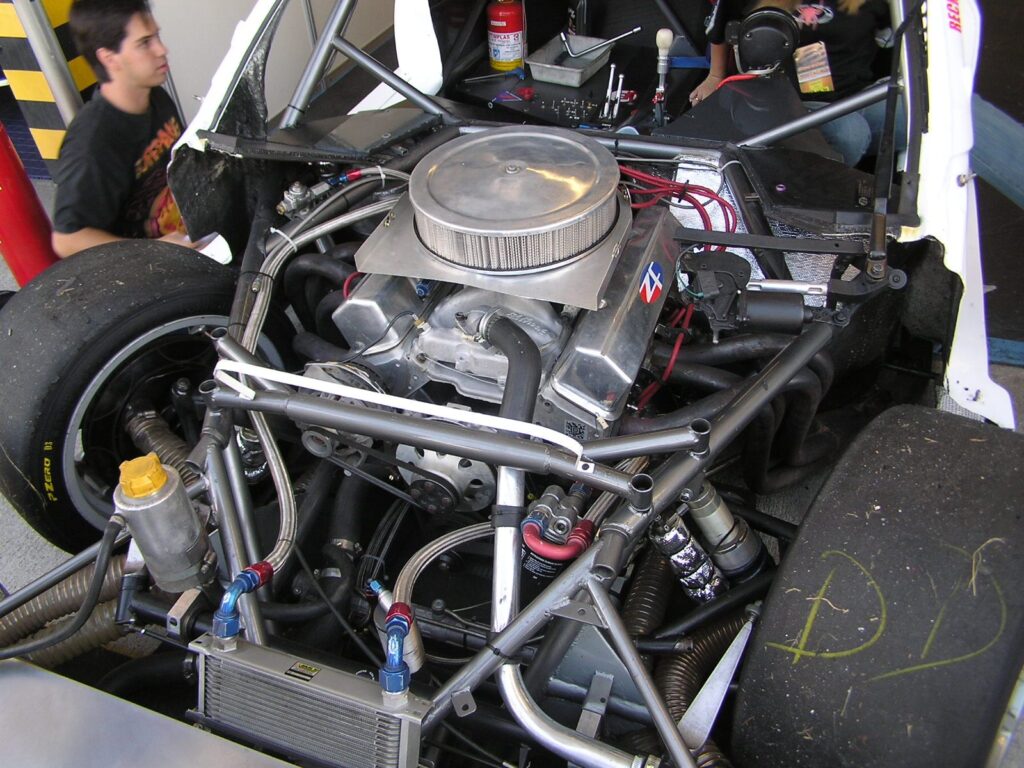
15. **The Enduring Legacy of the Oldsmobile 442**The journey of the Oldsmobile 442, from a precision-defined option package to a standalone performance icon, and through various iterations and revivals, is a testament to its adaptability and enduring appeal. It navigated the tumultuous waters of the muscle car era, the challenging period of emissions regulations and fuel crises, and the subsequent efforts to rekindle performance in later decades. Each phase of the 442’s existence added a unique chapter to its legend.
Even as its definition changed and its specifications evolved, the essence of the 442—a commitment to spirited performance, distinctive styling, and robust engineering—remained consistent. It continually pushed the boundaries of what an Oldsmobile could be, forging a distinct identity within the competitive landscape of American automotive history. From its powerful V8 engines to its specialized suspension setups, the 442 always delivered a driving experience that resonated with enthusiasts.
Car Model Information: 1969 Oldsmobile 442
Name: Oldsmobile 442
Manufacturer: Oldsmobile
ModelYears: 1964–1980,1985–1987,1990–1991
Class: Muscle car
Layout: FR layout
Caption: 1971 Oldsmobile 442
Categories: 1960s cars, 1970s cars, 1980s cars, All articles with unsourced statements, Articles with short description
Summary: The Oldsmobile 4-4-2 is a muscle car produced by Oldsmobile between the 1964 and 1987 model years. Introduced as an option package for US-sold F-85 and Cutlass models, it became a model in its own right from 1968 to 1971, spawned the Hurst/Olds in 1968, then reverted to an option through the mid-1970s. The name was revived in the 1980s on the rear-wheel drive Cutlass Supreme and early 1990s as an option package for the new front-wheel drive Cutlass Calais.
The “4-4-2” name (pronounced “Four-four-two”) derives from the original car’s four-barrel carburetor, four-speed manual transmission, and dual exhausts. It was originally written “4-4-2” (with badging showing hyphens between the numerals), and remained hyphenated throughout Oldsmobile’s use of the designation. Beginning in 1965, the 4-4-2s standard transmission was a three-speed manual along with an optional two-speed automatic and four-speed manual, but were still badged as “4-4-2″s.
Because of this change, from 1965 on, according to Oldsmobile brochures and advertisements, the 4-4-2 designation referred to the 400 cubic inch engine, four-barrel carburetor, and dual exhausts. By 1968, badging was shortened to simply “442”, but Oldsmobile brochures and internal documents continued to use the “4-4-2” model designation.
Get more information about: Oldsmobile 442
Buying a high-performing used car >>>
Brand: Oldsmobile Model: 442
Price: $43,990 Mileage: 24,000 mi.
Read more about: Beyond Nostalgia: 13 Legendary 1950s Cars Now Commanding Millions on the Collector Market
Today, the Oldsmobile 442 holds a revered place among classic car collectors and muscle car aficionados. Its various models, particularly the early, high-performance editions and the rare W-machines, are highly sought after. The story of the 442 is more than just a sequence of model years; it’s a vibrant chronicle of innovation, competition, and an unwavering passion for automotive excellence that continues to captivate and inspire. It is a true legend that has left an indelible mark on the landscape of American motoring.

